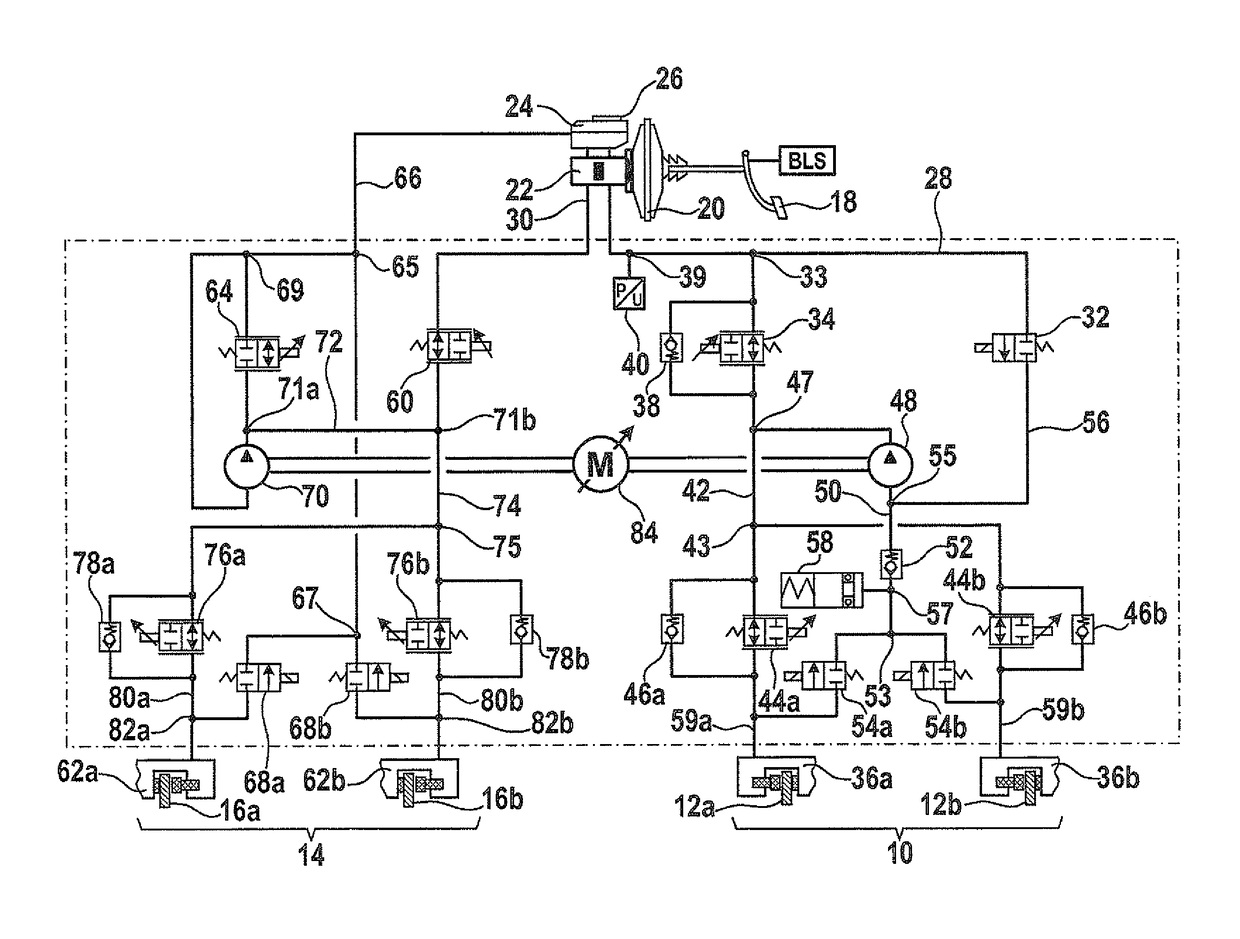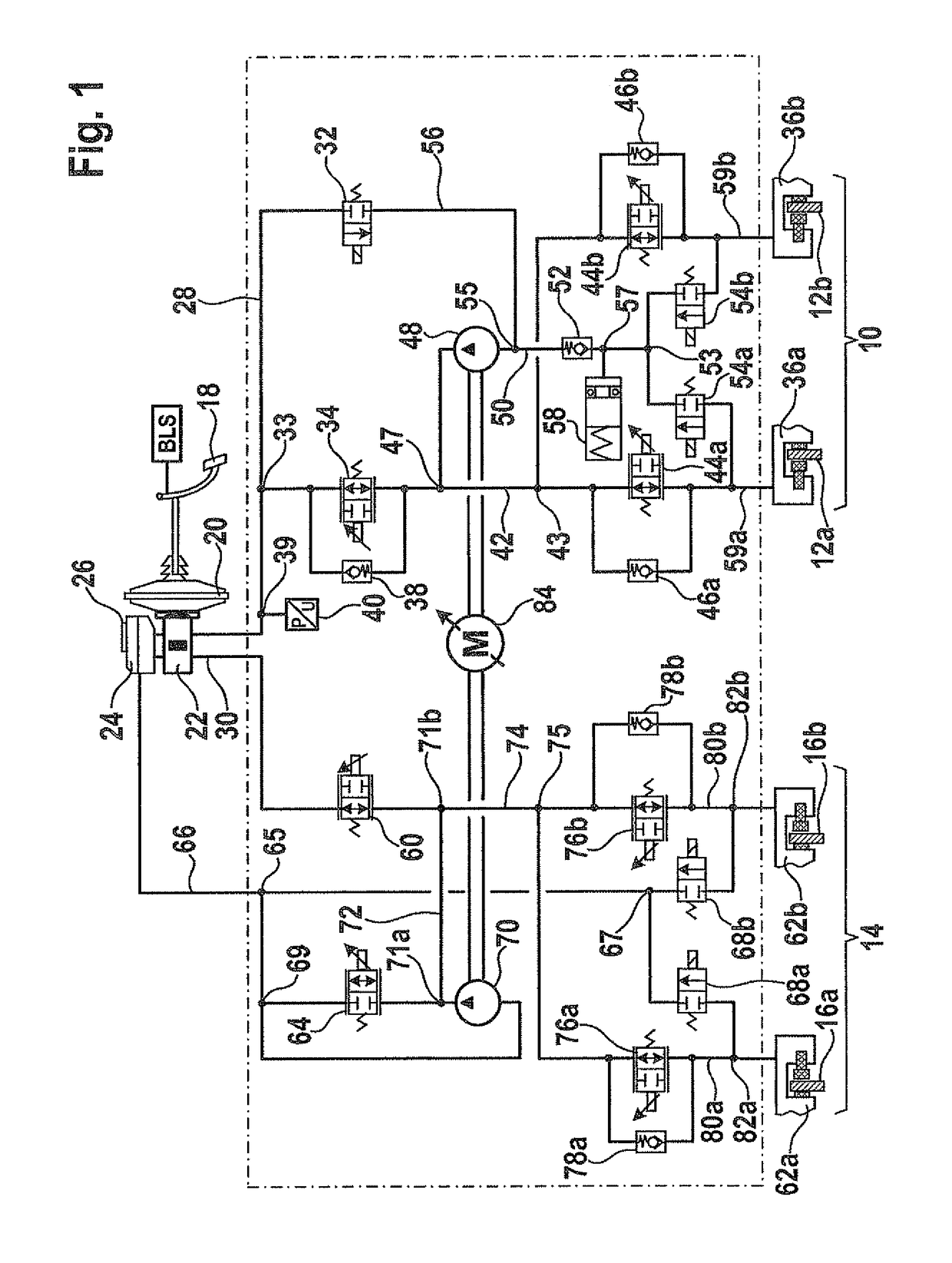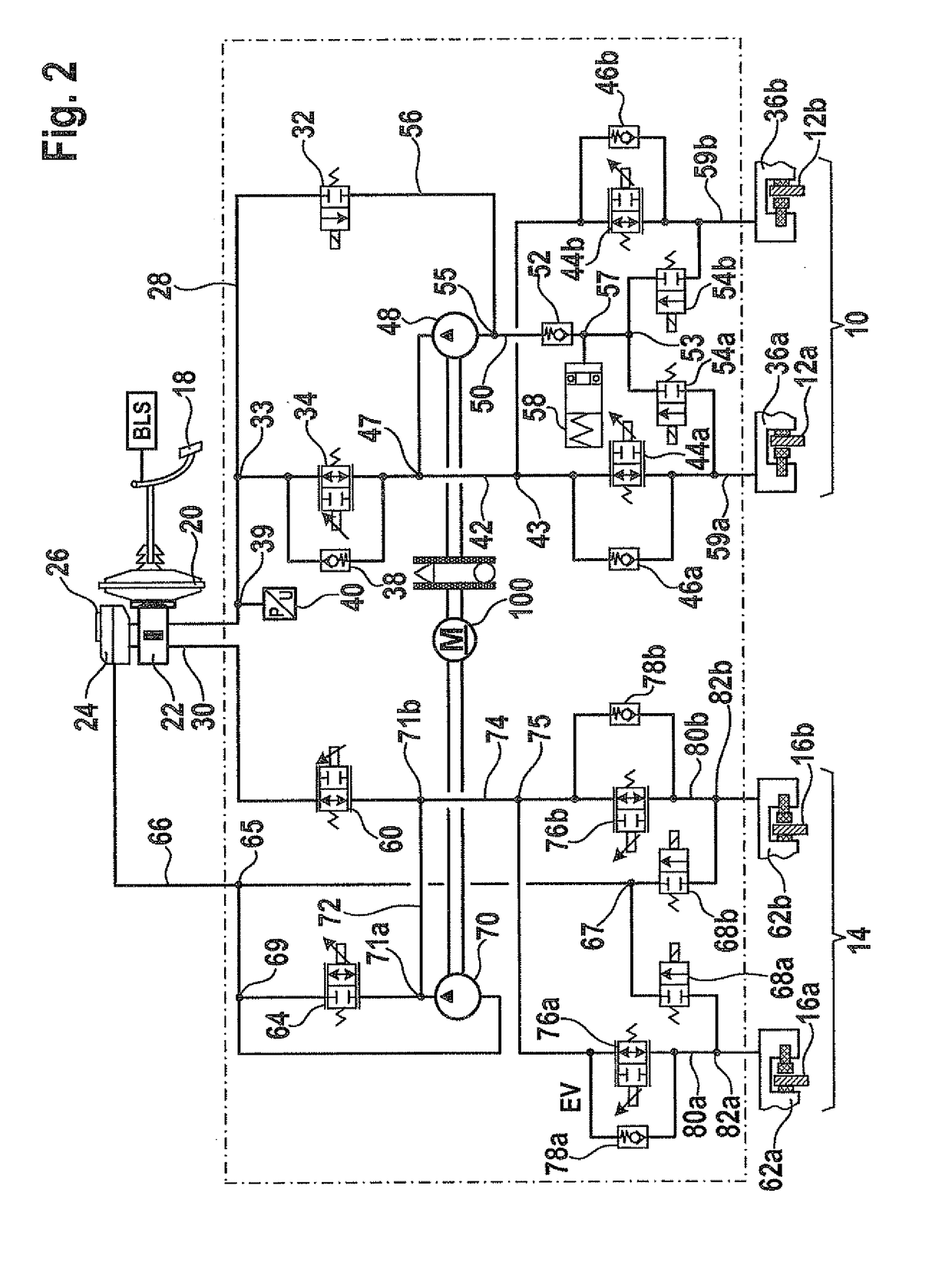Brake system and method for controlling a brake system
a brake system and brake technology, applied in the field of brake systems, can solve the problems of requiring a greater effort on the part of the driver, the recuperative braking system is often not able to exert a braking torque on the wheels of the vehicle, and the operation of the electric motor in generator mode typically requires a certain minimum speed of the vehicle, so as to achieve stable braking performance, improve the distribution of brake force, and improve the effect of handling performan
- Summary
- Abstract
- Description
- Claims
- Application Information
AI Technical Summary
Benefits of technology
Problems solved by technology
Method used
Image
Examples
Embodiment Construction
[0031]The brake system described in the following paragraphs is not only suited for use in a hybrid vehicle. Instead, the brake system may also be used in conventional vehicles, for example, to ensure a brake-force distribution at the wheels of the vehicle in the case of a braking during cornering and / or a travel in reverse.
[0032]FIG. 1 shows a circuit diagram of a first specific embodiment of the brake system.
[0033]The brake system illustrated in FIG. 1 encompasses a front brake circuit 10 for braking front wheels 12a and 12b and a rear brake circuit 14 for braking rear wheels 16a and 16b. However, the illustrated example is not limited to this distribution of wheels 12a, 12b, 16a and 16b. It is self-evident that the example is also applicable to a specific embodiment where wheels 12a and 12b are the rear wheels and wheels 16a and 16b are the front wheels of a vehicle. Wheels 12a and 12b and wheels 16a and 16b may also be two pairs of wheels that are configured on two different sid...
PUM
 Login to View More
Login to View More Abstract
Description
Claims
Application Information
 Login to View More
Login to View More - R&D
- Intellectual Property
- Life Sciences
- Materials
- Tech Scout
- Unparalleled Data Quality
- Higher Quality Content
- 60% Fewer Hallucinations
Browse by: Latest US Patents, China's latest patents, Technical Efficacy Thesaurus, Application Domain, Technology Topic, Popular Technical Reports.
© 2025 PatSnap. All rights reserved.Legal|Privacy policy|Modern Slavery Act Transparency Statement|Sitemap|About US| Contact US: help@patsnap.com



